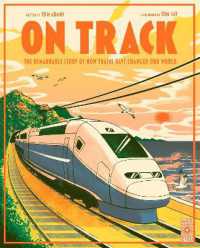- ホーム
- > 洋書
- > 英文書
- > Science / Mathematics
Full Description
This is the second of two volumes on the genesis of quantum mechanics in the first quarter of the 20th century. It covers the period 1923-1927. After covering some of the difficulties the old quantum theory had run into by the early 1920s as well as the discovery of the exclusion principle and electron spin, it traces the emergence of two forms of the new quantum mechanics, matrix mechanics and wave mechanics, in the years 1923-27. It then shows how the new theory took care of some of the failures of the old theory and put its successes on a more solid basis. Finally, it shows how in 1927 the two forms of the new theory were unified, first through statistical transformation theory, then through the Hilbert space formalism.
This volume provides a detailed analysis of the classic papers by Heisenberg, Born, Jordan, Dirac, De Broglie, Einstein, Schrödinger, von Neumann and other authors. Drawing on the correspondence of these and other physicists, their later reminiscences and the extensive secondary literature on the "quantum revolution", this volume places these papers in the context of the discussions out of which modern quantum mechanics emerged. It argues that the genesis of modern quantum mechanics can be seen as the construction of an arch on a scaffold provided by the old quantum theory, discarded once the arch could support itself.
Contents
8: Introduction to Volume 2
III. Transition to the New Quantum Theory
9: The Exclusion Principle and Electron Spin
10: Theory in the Old Quantum Theory
11: Umdeutung paper
12: Consolidation of Matrix Mechanics
13: Broglie's Matter Waves and Einstein's Quantum Theory of the Ideal Gas
14: and Wave Mechanics
15: and Failures of the Old Quantum Theory Revisited
IV. The Formalism of Quantum Mechanics and Its Statistical Interpretation
16: Interpretation of Matrix and Wave Mechanics
17: Neumann's Hilbert Space Formalism
18: Arch and Scaffold
Appendices
C. The Mathematics of Quantum Mechanics








